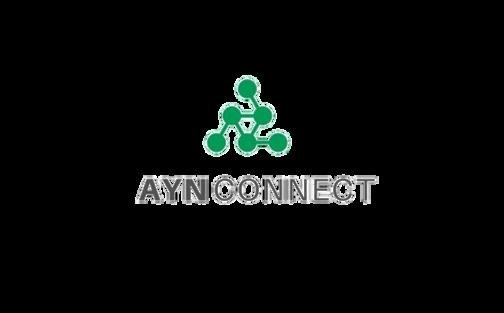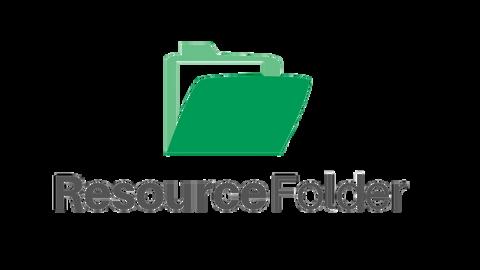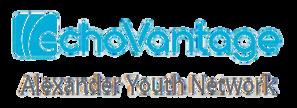THE PLAYBOOK
Psychiatric Residential Treatment Facility (PRTF)
Charlotte
Empowering Our Team with Clear Goals and Collaborative Success


Empowering Our Team with Clear Goals and Collaborative Success

On behalf of the Senior Management Team, I am delighted to welcome you to the Alexander Youth Network! We are honored you have chosen to join us on this transformative journey.
Our mission is clear and powerful: to provide quality treatment to children with serious emotional and behavioral challenges, enabling them and their families to achieve their potential and contribute positively to society. Every day, you have the incredible opportunity to change lives and create lasting impact.
What sets us apart is not just our expertise but the compassion and dedication we bring to our work. As you become part of our vibrant community, remember to lean on your colleagues, ask questions, and share your insights. Every interaction and challenge you overcome brings us closer to fulfilling our mission.
Officer

Together, we can make a profound difference in the lives of countless children and their families. Here’s to a future filled with hope, resilience, and positive transformation.
Best regards,
N. Craig Bass, ACSW Chief Executive Officer Alexander Youth Network
Welcome to The Playbook! This eBook is a central resource for all employees, providing a clear overview of our program expectations and guidelines. Our goal is to ensure everyone in your department has consistent, accurate information, helping us maintain high standards and achieve our goals.
Enhance Clarity: Ensure everyone understands their roles and aligns with department goals.
Improve Communication: Clearly communicate expectations, reducing misunderstandings.
Support Training: Serve as a resource for onboarding and ongoing training.
Facilitate Accountability: Establish clear benchmarks and performance indicators.
Program Overviews: Detailed descriptions of each program and key performance indicators.
Expectations: Clear outlines of your role and tasks.
Resources: Access to templates, forms, and contact information.
Procedures: Step-by-step guides to our processes.
Improvement: Best practices and tips for better performance.
Using The Playbook, you’ll have the tools to perform your job effectively and contribute to our department’s success. This eBook will be an invaluable resource in your professional journey.
VP of Residential Services
Coordinators/ Qualified / Associate Professionals
Program Supervisor
Residential Coaches
Program Overview
Population: Children ages 5-13 with significant emotional, psychological, and behavioral challenges
Capacity: 43-bed treatment unit across 7 cottages
Length of Stay: 90-120 days average, based on individual progress
Accreditation: Joint Commission
Service Focus: 24-hour structured care beyond typical outpatient settings but not requiring acute hospitalization
Key Program Features
Comprehensive Care: 24/7 nursing and psychiatric services with round-the-clock psychiatrist access
Individualized Treatment: Person-centered plans developed by interdisciplinary teams
Therapeutic Approach: Relationship-focused model using Neurosequential Model of Therapeutics (NMT)
Family Involvement: Intensive family therapy and support services
Trauma-Informed Care: Specialized treatment for children with trauma histories
Specialized Assessments
Psychiatric and Psychological Evaluations
Behavioral and Cognitive Assessments
Trauma and Emotional Health Screenings
Click Here: PRTF Program Expectations
Core Services:
Individual Therapy: Personal challenges and coping strategies development
Family Therapy: Supporting reintegration into home environment
AdditionalServices
Medicationmanagement
Group Therapy: Social skills, problemsolving, emotional regulation
24-Hour Psychiatric Nursing Care: Continuous medical and mental health support
Educationalsupportservices
Recreationalandexperientialtherapies
30-dayassessmentprogram
Seamlesstransitionstolessrestrictiveenvironments
Person-CenteredPlanningandCaseManagement CareCoordination
Recreational and Milieu Therapy: Structured activities for emotional/physical development
Effectivecoordinationbetweenserviceprovidersandfamily
Dischargeplanningalignedwithtreatmentprogress
Verificationofreferralsandserviceauthorizations
Continuityofcarepost-dischargemanagement‘
SystemofCareValues
Person-centeredplanningapproach
Strength-basedmethodology
Recovery-focusedframework
Collaborativeserviceprovidernetwork
Daily Schedule
Morning Program
Morning transition from cottages to classrooms
Morning check-in and attendance
Two-hour academic blocks
Therapeutic activities rotation
Afternoon Activities
Structured lunch periods (two shifts)
Outdoor activities (weather permitting)
Group engagement sessions
Co-regulation activities
Collaborative clean-up
Evening Programming (4pm onwards)
Cottage-based activities
NMT-aligned structured activities
Hygiene routines
Medication administration
Approved phone call opportunities
Activity Types
Academic Structure
Hours: Monday-Friday, 8:00 AM to 4:00 PM
Staff: General Education and Exceptional
Children's teachers
Program Type: Licensed non-public private school
Academic Year: Late August through late June
Core Components
Academic Focus:
Reading (phonics, comprehension, spelling)
Writing Mathematics
Social Studies
Science
Character Development
Social Skills Training
Social Emotional Learning (SEL)
Teaching Methodology
Station teaching approach
Small group learning
Individualized attention
Flexible grouping
Professional tutoring support
Your Role in Program Management
You will encounter approved volunteers across campus wearing ID badges
You are the primary supervisor for all volunteer interactions with clients
You must maintain line-of-sight supervision at all times, even when Volunteer Engagement Officers are present
Volunteer Activities You'll Oversee
Individual Services
Tutors (21+ years): Academic support in designated learning spaces
Lunch Buddies (21+ years): Mealtime and structured activities
Recreation Leaders: Specialized activities including arts, sports, yoga
Group Activities
Community Groups (16+ years): Special events and campus projects
Religious Activities: Optional for clients with guardian permission
Residential Staff Responsibilities on Volunteer Services
Safety Requirements
Check volunteer ID badges
Maintain constant supervision
Never leave volunteers alone with clients
Guide volunteers to safety during crises
Report concerns immediately to supervisor
Program Support
Review volunteer schedule at start of shift
Brief volunteers on client needs and expectations
Document all interactions in shift notes
Communicate schedule changes promptly
Privacy Management
Monitor conversations for confidentiality
Prevent client photos/recordings
Direct client questions to clinical staff
Ensure activities occur in appropriate spaces
Primary Goals
Stabilize acute psychiatric symptoms
Improve emotional/behavioral functioning
Enhance family relationships
Prepare for community reintegration
Specific Objectives
Emotional and Behavioral Regulation
Symptom stabilization
Crisis reduction
Improved coping mechanisms
Therapeutic Engagement
Active participation in therapy
Enhanced self-awareness
Goal setting progress
Risk Reduction and Safety
Decreased self-harm behaviors
Improved safety planning
Crisis intervention effectiveness
Required Training
Comprehensive onboarding
Trauma-informed care
Crisis intervention
Behavioral management
Safety protocols
NMT implementation
Supervision Structure
Regular clinical supervision
Team collaboration
Professional development
Performance evaluation
Progress Notes:
Direct care staff complete shift notes in EchoVantage
Document client participation and response to services
Complete by end of shift
Case Notes:
Document all internal/external communications about client
Record any contact not included in progress notes
Incident Reports:
Required for non-routine situations (who, what, when, where, how)
Examples: injuries, missed medication, aggression, self-harm
Complete by end of shift
Guardian notification required
Hand Off Communication (HOC):
Shift-to-shift information transfer
Include recommended interventions and effectiveness
Note any restrictive interventions or precautions
Document client's daily progress
Restrictive Intervention:
Nurse initiates, staff completes form
Document events, interventions attempted
Include future prevention strategies
Complete before end of shift
Precautions:
Assigned by PRTF supervisor/clinician only
Required for unsafe behaviors
Include safety plan
Assess risk every 24 hours
Clinician discontinues status
All documentation must be timely and accurate, completed by end of shift to maintain quality care and meet regulatory requirements.
An incident or unusual occurrence is any happening not consistent with routine operation or care that may lead to adverse effects on a child in care. Staff must complete an Incident Report whenever such an event occurs, or they become aware of one.
Examples of reportable incidents include but are not limited to:
Injury requiring medical attention
Hospitalization or off-site emergency assessment
Suicidal threats or gestures
Possession of a weapon or illegal substance
Allegation of maltreatment
Runaway
Serious property destruction
Medication errors
Serious sexual acting out
Death
Rape or sexual assault
School suspension or removal
Physical aggression toward others
Reporting Process:
1. Complete the incident report as soon as possible. 2. Supervisor or QP will take appropriate action and complete related documentation. 3. Incidents are classified as minor (level I), moderate (level II), or serious (Level III).
5.
Notify supervisor or Qualified Professional (QP) on call within 4 hours of the incident.
4. Critical Incidents (Level II or III) require additional reporting in the NC Incident Response Improvement System (IRIS).
Additional notifications may be required for specific incidents, such as medication errors or assault allegations.
Important Note
Before proceeding, please review the BH Policies found in our AYN Connect Policies and Procedures. These policies provide comprehensive guidelines that complement this guide.
Overview
Restrictive interventions are emergency measures used only when there's imminent risk of harm. Our goal is to minimize their use through proactive prevention techniques.
Key Points for Staff
Authorization: Only trained, authorized staff may initiate restrictive interventions.
Training: You must complete training in de-escalation, physical holding, client monitoring, CPR, and first aid.
Procedures:
A licensed independent practitioner (LIP) must order the intervention. Document each instance thoroughly.
Follow age-based time limits for restraint orders.
Continuously monitor the client during and after the intervention.
Discontinuation:
Stop the intervention as soon as the individual is calm. Inform the child of behavior criteria for ending the intervention.
Post-Intervention:
Conduct a debriefing within 24 hours with the child, staff, and when appropriate, the legal custodian.
Planned Interventions:
May be included in the Person-Centered Plan if approved by the Client Rights and Ethics Committee.
Must be reviewed monthly by the Child and Family Team.
Remember: Our primary focus is on prevention and de-escalation. Restrictive interventions are a last resort. Always refer to the full BH Policies in AYN Connect for complete and up-to-date information.
Progress Notes Expectation
Lead BHCs are responsible for ensuring all documentation is completed during their shifts.
If no Lead BHC is present, this responsibility falls to the Program Manager.
Lead BHCs must confirm all progress notes are completed before ending their shift.
This confirmation is required every shift, every day.
Program Supervisor must tag progress notes within 24 hours. Incomplete notes require immediate disciplinary action, including a written warning.
Written warnings must be submitted to the Executive Director within 24 hours of the infraction.
All staff are accountable for fulfilling documentation duties.
Documentation must be complete, accurate, and timely to ensure funding, quality care, and legal compliance.
Program Supervisor must address documentation inconsistencies promptly.
Staff should strive for ongoing improvement in documentation practices.
Accuratedocumentationimpactsfunding,qualityofcare,andlegal compliance.
CommunicationbetweenProgramSupervisor,LeadBHCs,andstaffis crucialformaintaininghighdocumentationstandards
Consistentlymeetingtheseexpectationsisessentialforjobperformance andcontinuedemployment.
LeadBHCsareresponsibleforensuringallstaffcompletetheirdocumentation bytheendoftheirshiftswithProgramSupervisorprovidingoversightand addressinganyinconsistenciespromptly.
Accepted Sources: Referrals are accepted from schools, social service agencies, healthcare providers, mental health providers, juvenile justice, and families.
Processed By: Managed through the Alexander Youth Network Access Department, ensuring all documentation is complete and evaluating the appropriateness of the referral.
Criteria for Appropriateness: Youth must meet the medical necessity for the highest level of residential care, including those with significant emotional or behavioral challenges.
Exclusion Criteria: Referrals are not appropriate for youth whose primary diagnosis is substance abuse without accompanying behavioral health needs.
Alternative Recommendations: If the PRTF program is not suitable for a child, the Access Department will recommend alternate services to meet the child’s needs.
Our staff are more than caregivers; they are mentors, guides, and advocates for each adolescent’s future. By engaging deeply with youth and their families, they foster resilience, build hope, and ensure that every transition is a step toward a brighter tomorrow. Your dedication makes a difference every day. Together, we are shaping a path toward recovery and success for every young person we serve.
Alexander’s 30-Day Assessment program serves up to six children in our Charlotte PRTF facility who are in need of comprehensive diagnostic assessment while determining admission to the PRTF program.
The 30-Day Assessment unit provides an intensely supervised treatment setting providing stabilization, diagnostic evaluation, psychiatric treatment, 24-hour nursing, and post-discharge/aftercare treatment planning.
Duration: 30 days of intensive assessment and observation
Components:
Psychiatric evaluation
Psychological testing
Educational assessment
Medical examination
Family dynamics assessment
Behavioral observation in structured and unstructured settings
Multidisciplinary Approach: Involves psychiatrists, psychologists, therapists, nurses, and educational specialists
Daily Activities: Participation in PRTF program activities to assess social skills and behavioral patterns
Family Involvement: Family sessions to gather historical information and assess family dynamics
Outcome: Detailed report with diagnosis, treatment recommendations, and appropriate level of care suggestions
Follow-up: Care coordination to ensure smooth transition to recommended services or continued PRTF stay if necessary
Focus: Provides enhanced family engagement, decreased length of stay, and improved outcomes for child’s post-discharge.
Service Delivery: A dedicated team, including a master’s-level clinician and a Family Peer Partner, offers services both in the residential setting and in the child’s home to prepare the family for successful reintegration.
Therapeutic Focus: Includes in-home therapy sessions and on-site interventions, addressing challenges in real-time.
Key Components:
Family Involvement: Begins at admission, with weekly in-home family therapy, home passes, and overnight visits to prepare families for reunification.
Small Caseloads: Serves 4-6 active clients, allowing for focused, individualized care, and supports 12-15 post-discharge clients.
Shorter Length of Stay: Provides intensive care in a shorter time frame, aiming for faster reunification and reduced readmission rates.
Comprehensive Discharge Planning: Begins at admission, ensuring continuity of care, including mental health services, school placement, and community supports.
Post-Discharge Follow-Up: Continues for up to one year, offering home visits, phone consultations, and crisis intervention to ensure stability during transition.

CentralizedResourceFolder:Accessourcollaborativedocumentlibrary, whereinterdepartmentalfilesharingbecomeseffortless.
PoliciesandProcedures:Neverwonderwheretofindcriticalinformation again.Accessallagencypoliciesandproceduresinonecentralized,easy-tonavigatelocation.
DedicatedTeamSites:Eachdepartmentenjoysatailoreddigitalspacefor filestorageandteamwork,enhancingproductivityandorganization.
AYNStream:UnlockthefullpotentialofAYNConnectwithlivestreamsand videotutorials,ensuringyou'realwaysup-to-speedwithourlatestfeatures.
VivaEngage:YourCommunicationPowerhouseStayconnectedwith colleaguesthroughthisdynamicplatformforannouncements,discussions, andtimelyupdates.
AYNConnectisn'tjustatool;it'syourgatewaytoamoreefficient,collaborative, andinformedworkexperience.Embracethefutureofworkplaceconnectivity withAYNConnect–whereinformationmeetsinnovation.

Agency Policies Click Here

At Alexander Youth Network, we provide top-quality care through comprehensive policies ensuring safety and consistency. Visit our Policies & Procedures page on AYN Connect for more information.
Access Our Policies Instantly!
Get to know our agency policies in no time. Simply click the folder to your left and find all the important guidelines at your fingertips.
Employee Handbook
Behavior Healthcare Policies IT Policy
Need to find our Agency Procedures?
Click the folder to your left and access all our Agency Procedures instantly!
CCA and Reassessment Procedure
Agency Procedures Click Here
Emergency and Inpatient Notifications
IHAP Procedure
Handle with Care Physical Intervention
Emergency and Inpatient Notifications

Program Procedures is designed to assist our staff in efficiently accessing and implementing essential protocols within your PRTF program. By following these procedures, we collectively contribute to delivering the best possible care and services to the youth under our care.
Here are some of the most frequently used procedures:
Staff Supervision Monthly Review
PRTF Procedures Click Here
PRTF Procedure for Communication of Medical Concerns
Precautions Monitoring in PRTF
Client Phone Procedure
PRTF Visitor Procedure
Simplyclickthefoldertoyourrighttoaccessthe streamlinedPRTFProcedures!
Procedures Streamlined Click Here
Welcome to AYN Connect's Resource Folder, designed to support all staff with comprehensive departmental information, standardized templates, checklists, forms, best practices, and training materials. This centralized hub ensures you have the tools and resources needed for success. Our goal is to equip you for excellence and enhance our mission.


Welcome to the PRTF Document Library! Here, you'll find essential tools, guidelines, templates, checklists, workflows, forms, and training materials tailored for the PRTF program. Access and contribute valuable resources to empower your team and support our mission effectively.
Administration Main Campus
Teacher - PRTF
Food Services
iPRTF
Rec. Therapist
And More...
PRTF Doc Library Click Here
The EOC is a comprehensive approach to safety and well-being within our organization.
Key Points Include:
Safety Philosophy
Highest safety standards in all operations
Safety is everyone's responsibility Prevention of injury and illness is a primary goal
EOC Committee
Assists in implementing campus safety plans, policies, and procedures
Develops, implements, and evaluates the safety program
Aims to create and maintain a safetyconscious environment Principles:
All injuries and accidents are preventable
Safety is the first consideration in all workplace actions
Written safety plans are essential
Off-job safety awareness is encouraged
Employee Expectations
Follow all safety program aspects
Contribute to a safe, organized, and efficient workplace
Know and follow written safety plans
Suggest improvements to the safety program
Enviroment of Care Resources
Explore the top resources!
EOC Plan
Safety Checklist
Medication Resources
Safety Plan
Logs Checklist
Discharge Resources
Field Trip Permission Form
Power Outage Flowchart
MAR
Program Sinage


At Alexander Youth Network, we use EchoVantage to streamline our operations and ensure we provide the best care possible. EchoVantage is an advanced electronic health record (EHR) system designed specifically for behavioral health organizations, and it's a key tool in our daily work.
Click Here
EchoVantage’s Knowledge Base
EchoVantageisacomprehensiveEHRsystemthatintegratesvariousaspectsof clientmanagement,documentation,billing,andreporting.Ithelpsusmaintain accurateandup-to-dateclientrecords,manageappointments,andensure compliancewithindustrystandardsandregulations.
ClientManagement:Maintaindetailedclientprofilesandtreatmentplans. Scheduling:Manageandcoordinateappointments.
Documentation:RecordSessions,ProgressNotes,andIncidentReport.
Billing:Automatebillingandclaimssubmission.
Reporting:Generatereportsforperformancetrackingandcompliance.

Visit our playlist on AYN Stream, you'll find a collection of recordings that offer: Guidance and Support: Step-by-step video guides on logging in, troubleshooting, and using new updates.
New Feature Explanations: Detailed breakdowns of the latest EchoVantage features. Assessment and Note Guides: Comprehensive tutorials on conducting assessments and managing notes effectively.
Access Teams: O Microsoft Teams. 1.
Open AlexAI: Fin con and click 2.

Restart Session: Click restart" or type it. 3. Open Ticket: Click "Open a New Ticket". 4. Select Support Team: Click the right team. 5. Enter Request: Provide lots of details. 6. Submit Ticket & Attach files if needed. 7.
Starting a Conversation: Type "restart" to clear previous chats and start fresh

Ending a Conversation: Type "quit" to properly end the conversation. Switching Topics: Type "quit" to end the current topic, then "restart" to begin a new one This keeps the chatbot on track Click Here: AlexAI Tips & Tricks

Paycom is a comprehensive and user-friendly HRIS solution where we complete HR processes (submitting timesheets / time off requests, viewing benefits, etc.)
Learn more: AYN Connect: Paycom

Paycom offers a comprehensive Knowledge Base with 125 articles and guides on features and troubleshooting. Additionally, there are 123 step-by-step instructional videos and FAQs addressing common questions on various topics.
Benefits: Show Me How: to Enroll in Benefits
Paycom Basics: Payroll: Show Me How: to Approve My Check (Mobile)
Payroll: Show Me How: to Set Up My Direct Deposit
Time Management: Show Me How: to Approve My Timecard
Time Management: Show Me How: to Submit a Punch Change Request
Time-Off Requests: Show Me How: to Request Time Off (Video)
Scheduling: Show Me How: to Review My Schedule
Scheduling: Show Me How: to Offer and Pick Up Shifts

Click Here: Show Me How to Download the iOS App
Click Here: Show Me How to Download the Android App
Thank you for taking the time to read through our PRTF Charlotte Program Playbook. We hope this resource has provided you with clear expectations, useful guidelines, and valuable insights to help you thrive in your role. If you have any questions please contact your manager, search the PRTF Charlotte SharePoint site, or ask AlexAI for assistance.
Program Expectations: Understand the standards and responsibilities for PRTF Charlotte staff.
Streamlined Procedures: Follow the outlined processes for efficient and effective operations.
Resources and Tools: Access the tools and information you need to succeed.
Each member of our team plays a vital role in achieving our mission to provide exceptional care and support to those we serve. Your dedication, professionalism, and compassion make a significant impact.
For ongoing support and updates, stay connected through:
Microsoft Teams: Join discussions, ask questions, and share insights
SharePoint: Access the latest documents, updates, and resources
Stream Videos: Watch quick demos and tutorials for visual guidance
We are excited to have you as part of our team and look forward to your contributions. Together, we can achieve excellence and make a difference in the lives of those we serve.
Thankyou, AlexanderYouthNetwork






THE PLAYBOOK Empowering Our Team with Clear Goals and Collaborative Success